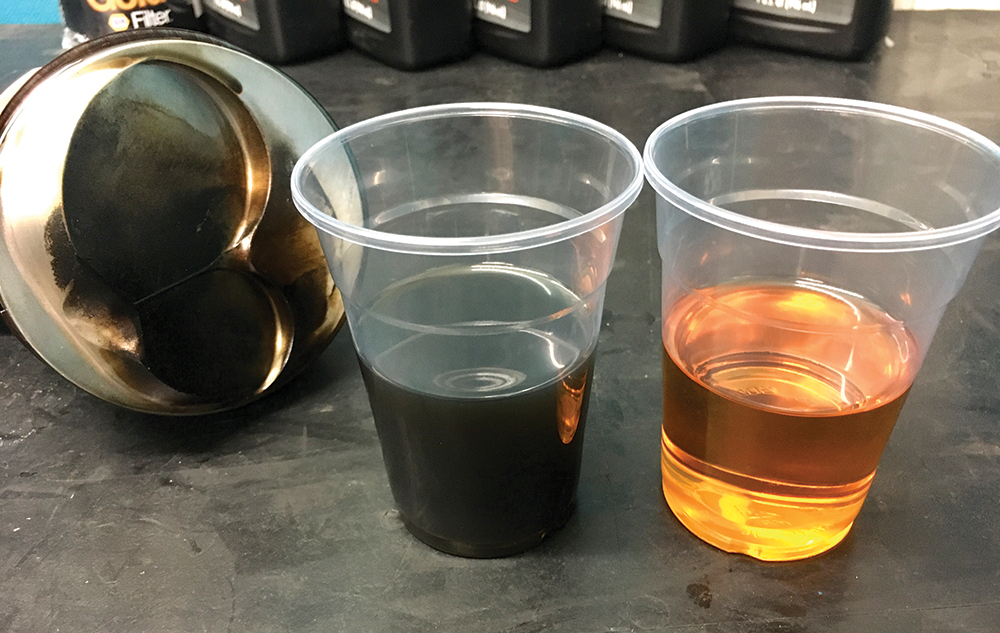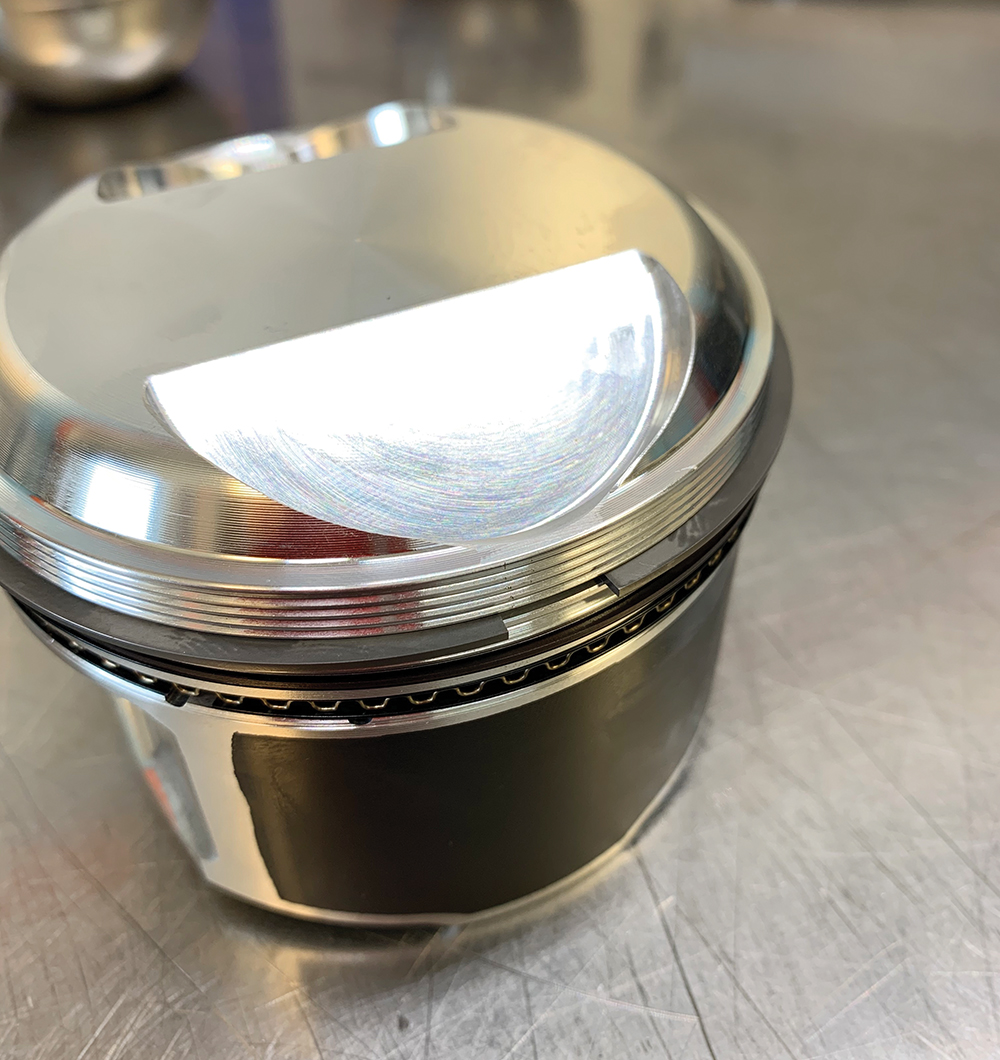Tech Update: YOUR Oil’s Best Friend—The Piston Ring

Why this seal between the motor oil and combustion gases is so vital to your engine’s performance.
Have you ever wondered why automatic transmission fluid is “fill-for-life” and motor oil still has to be changed every 5,000 miles? The simple answer is contamination.
Combustion is a powerful but dirty business. Besides what comes out of the tail pipe, those same combustion gases—carbon monoxide, nitrogen oxides, vaporized moisture, and partially burnt fuel—also make their way into the crankcase. When these same exhaust gases that we don’t want to breathe (because they can kill you) leak past the piston rings, we call them blow-by. These harmful gases chemically attack the motor oil, which is why used motor oil turns dark.
As a certified lubrication specialist, oil monitoring analyst, and member of the Society of Tribologists & Lubrication Engineers, I can tell you that blow-by gases are what contaminate your motor oil. Jet turbine engines experience incredibly high temperatures, but those lubricants will live significantly longer than internal combustion engine oils. Why? There is no blow-by in turbine engines.
In fact, the same base oil used to make motor oils is also used to make stationary turbine engine oils. While a motor oil might live 10,000 miles in a four-cycle engine, these turbine oils will live more than 10 years! What is the difference? Turbine engines never expose the lubricant to combustion gases. Both internal combustion engines and turbines generate lots of heat, but only internal combustion engines expose the lubricant to combustion blow-by gases.

Now don’t get me wrong, motor oils are designed to withstand the assault of these intruders. But the fact remains that combustion blow-by gases contaminate and chemically degrade motor oil. This is why a high-performance motor oil can contain up to 14 different chemicals, and a jet turbine oil might contain only four different chemicals.
So what does all of this mean? Simply put, your piston rings are your motor oil’s best friend because they are a seal between the motor oil and the combustion gases.
Motor oil is the lifeblood and sole source of lubrication for your motor. The job of the motor oil is as follows:
1. Cool the lubricated parts in the engine.
2. Clean the lubricated parts in the engine.
3. Protect the lubricated parts in the engine.
4. Transfer power in the hydraulic parts in the engine.
Fuel dilution, moisture, soot, and heat all affect the motor oil’s ability to do its job, so it pays to keep your motor oil cool, clean, and dry. With that said, your piston rings are the only line of defense between combustion gases and your motor oil.
Invented by John Ramsbottom in 1854 (before the internal combustion engine was even invented), the piston ring is a seal. The job of the piston ring is to:
1. Seal the combustion chamber and minimize the loss of gases to the crank case.
2. Improve heat transfer from the piston to the cylinder wall.
3. Help maintain the proper quantity of oil between the piston and the cylinder wall.
4. Regulate engine oil consumption by scraping excess oil from the cylinder walls.

When you look at the job of the motor oil (to cool, clean, and lubricate the engine) and the job of the piston rings (to seal, transfer heat, and meter the oil), it is easy to see how they play complementary roles. The better the piston rings do their job, the easier it is for the motor oil to do its job, and vice versa.
In over 15 years of reviewing used oil analysis reports, I’ve never seen low engine wear when the oil contamination levels are high. In fact, the bad wear results generally coincide with high levels of fuel dilution and other combustion-related contamination.
However, when was the last time you thought of motor oil and immediately thought about piston rings?
When you think about motor oil today, the first thing that probably comes to mind is zinc (ZDDP), and that is understandable. The issues related to changes in ZDDP levels in motor oil have been the headline story in our industry for over 15 years, so it is understandable to think zinc at the mention of motor oil. However, there is more to motor oil than just ZDDP—just as there are other parts in an engine besides the camshaft.
Today, we have several specialty oils designed to protect your engine. But these oils can’t do their job without the piston ring doing its job.
In simple terms, the better the piston rings seal the gap between the piston and cylinder wall, the less combustion blow-by gas (which is hot and full of moisture, fuel, and other nasty chemicals) gets into the oil. The bottom line is that better ring seal means better oil life and performance, which means longer engine life. That is why the piston ring is your motor oil’s best friend!
Lake Speed, Jr. is the VP of Sales & Marketing at Total Seal Piston Rings. He is also a member of the Society of Tribologists and Lubrication Engineers and holds Certified Lubrication Specialist and Oil Monitoring Analyst certifications.
 MEMBERSHIP LOGIN
MEMBERSHIP LOGIN JOIN PRI
JOIN PRI


